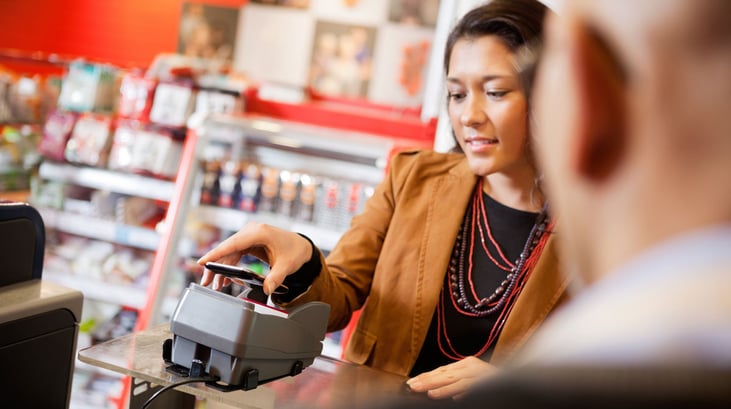Technology has already changed the retail landscape. Sighs of frustration can be heard when a customer insists on actually writing an old-school check for purchases when they could swipe plastic much faster. Managers check inventory with hand-held electronic scanners. Consumers brandish their smartphone screens instead of handing over clipped coupons.
The Internet of Things (IoT) promises to revolutionize the retail industry even further. From machine-to-machine (M2M) communication to printed electronics, the future of retail will offer smoother, faster, cleaner processes from setting prices to creating point-of-sale procedures.
Tracking Customers Through the Store
Digital sensors offer considerable benefits to retailers who want to provide personalized shopping experiences for their customers. Reporting for Fast Company, tech writer David Lumb describes how sensors stored in light fixtures can track employee movement through an office building. Similar sensors could easily map customer traffic patterns through a store, providing in-depth information about how consumers use the space and the actual path they take from store entry to point of sale.
Retailers could take this technology a step further and use M2M communication to send coupons, discount codes, and other correspondence to shoppers' smartphones. The pervasiveness of Wi-Fi and Bluetooth enables store owners to maximize their relationships with shoppers through personalized advertising. These targeted messages can help boost profits as well as customer loyalty.
Loss Prevention
According to the National Association of Shoplifting Prevention, "More than 10 million people have been caught shoplifting in the last five years." This crime results in billions of lost dollars for retailers worldwide, but the Internet of Things can help curb these losses. For one thing, printed electronics, such as RFID tags, deter theft, especially among employees.
"People will not be able to take cartons or cases out the back door of a warehouse or off a truck without someone knowing that it’s occurring or did occur and which particular employee did it."
Pete Abell
In an article for the RFID Journal, research director Pete Abell said, "People will not be able to take cartons or cases out the back door of a warehouse or off a truck without someone knowing that it’s occurring or did occur and which particular employee did it." The article also notes the benefits of tracking stolen merchandise on the gray market, potentially recovering goods and returning them to the supply chain.
Improving Product Placement
The marriage between the Internet of Things and Big Data promises big changes in the retail industry. Writing for Forbes, IBM principal analyst Bill Chamberlin illustrates the benefits of big data and the IoT for customer and retail analytics. Retailers can collect data about how and when each customer buyers a particular product as well as the amount of time that customer spends making a decision.
Further customer analytics will allow businesses to prevent check-out bottlenecks, rearrange merchandise for ideal product placement, and prepare for seasonal sales. Through connected devices, retailers will use smartphones, sensors, security cameras, and on-premises computers to custom-tailor the customer experience.
Additionally, the IoT can hasten the process of restocking shelves and making inventory decisions. Using connected devices, they will leverage real-time data to replenish merchandise on shelves and to predict future customer behavior.
Blurring the Lines Between Online and Physical Stores
Statistics for 2015 haven't yet been compiled, but experts estimated that last year would produce $279 billion in online shopping revenue, according to The American Genius. Brick-and-mortar retailers have to make up for the revenue they lose to online shoppers, which means creating a shopping experience that bridges the gap between the real and the virtual.
For instance, many apps allow shoppers to compare prices between online retailers and physical stores. The IoT will allow businesses to integrate their brick-and-mortar and online stores to give shoppers the ultimate flexibility in how they buy the products they want.
Connecting the Home With the Retailer
M2M technology has a bright future in home automation, but such technology can also apply to retail sales. Future smart homes will warn consumers when they're low on specific products, then send them alerts. They might even allow customers to automate online purchases so they never run out of necessities.
Consider Bud Light's e-refrigerator, for instance. It warns the consumers when beer reserves run low so he or she can run to the store and stock up. Such innovation is just the start of automation for the home and for retail.
From gaining improved customer insights to reducing merchandise loss, the IoT offers several advantages for both the retail industry and the consumer. Who knows what might await around the next technological corner?

